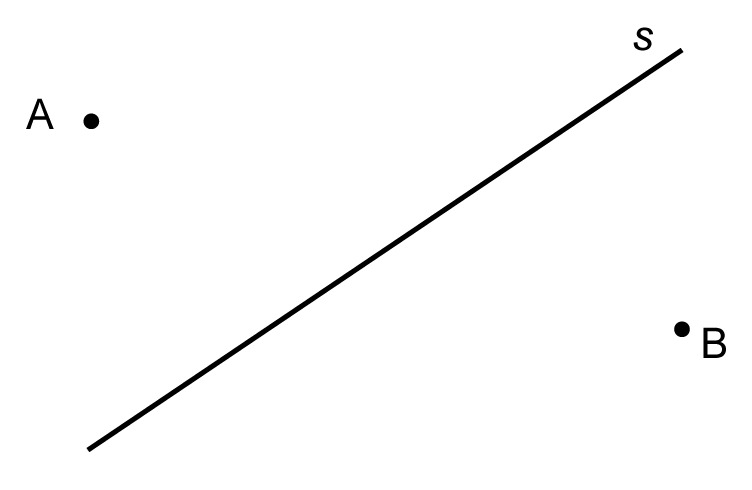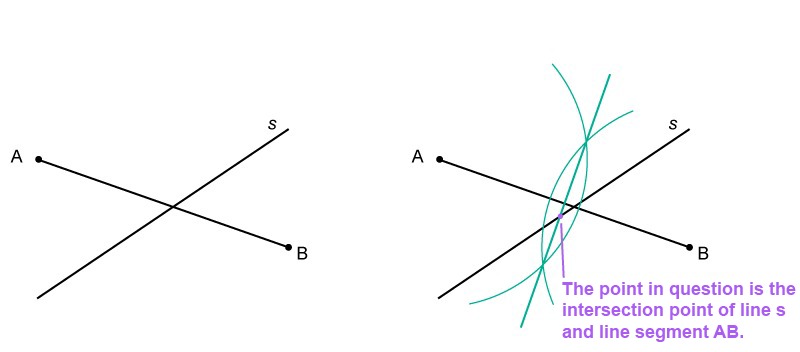7. Drawing with a compass
Exercises
Geometric drawing
The compass and the ruler are the central tools of geometric drawing. The ruler is used only to draw straight lines. Measurements are made with a compass that can be used to separate line segments of equal length.
Bisecting an angle
A compass can be used to bisect angles.
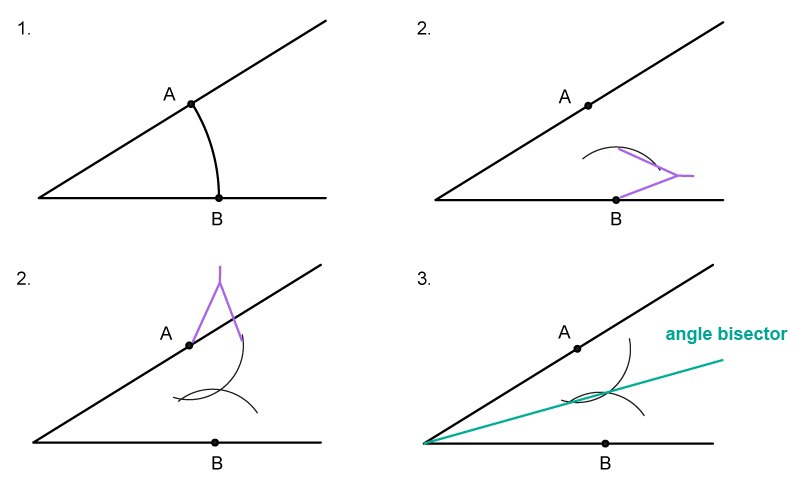
- First, a circular arc that intersects both sides of the angle is drawn. The vertex of the angle acts as the arc's central point.
- Points A and B are marked in the locations where the circular arc intersects the sides of the angle. These points are then used as the central points of two smaller circular arcs of the same radius that intersect one another inside the angle's opening.
- The point of intersection of the two circular arcs is connected to the vertex of the angle. This ray is the angle's bisector.
Drawing a triangle
A compass can be used to draw a triangle.
Draw a triangle ABC with side lengths of 6 cm, 5 cm and 4 cm.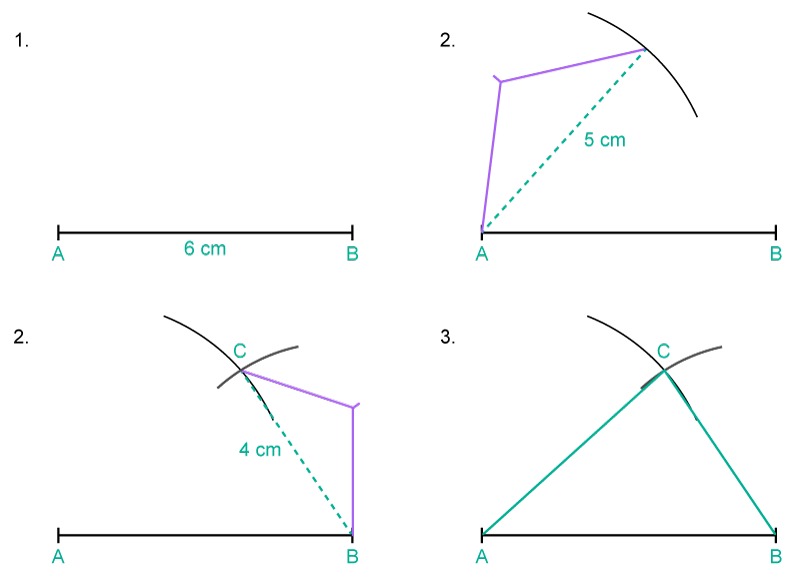
Draw a triangle ABC with side lengths of 6 cm, 5 cm and 4 cm.

- First, draw one side of the triangle, or the line segment AB.
- Use the end points of the line segment (points A and B) as the central points of two circular arcs. Draw two circular arcs, the radii of which are the same length as the two remaining sides of the triangle.
- Connect the intersection point C of the two arcs to the endpoints of the line segment AB.
Drawing the perpendicular bisector of a segment
Many geometric drawing tasks use the perpendicular bisector of a segment to measure various things. This is useful because each point of the perpendicular bisector is equidistant from the end points of the segment.
Let's draw the perpendicular bisector for the line segment AB.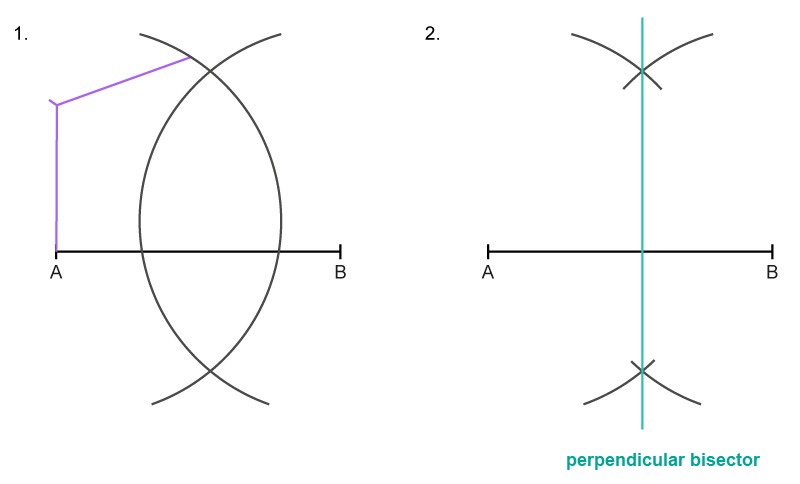
- Draw the line segment's endpoints A and B as centres of intersecting circular arcs with the same radius.
- Draw a line that passes through the intersections of the two circular arcs. This straight line is the perpendicular bisector of segment line AB.
Transfering an angle
A compass can also be used to transfer angles.
Transfer the angle [[$ \alpha $]] geometrically to a point P on the line m.
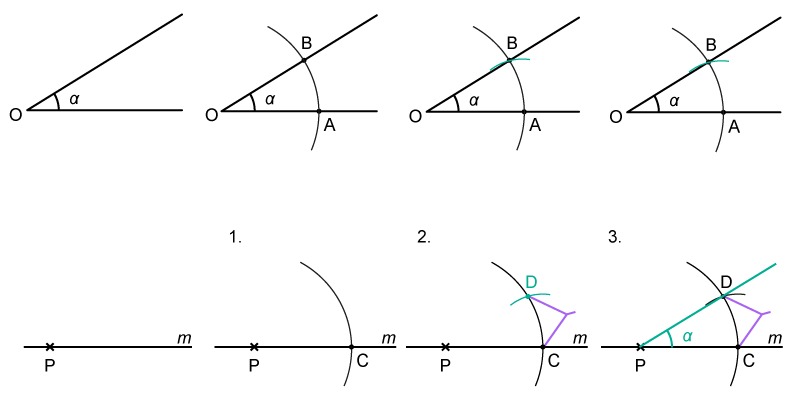
Transfer the angle [[$ \alpha $]] geometrically to a point P on the line m.

- Draw two circular arcs of the same radius, the central points of which are the points O and P.
- Measure the chord corresponding to the arc AB with a compass. Draw a chord of corresponding length (CD).
- Draw a ray PD starting at point P to form an angle CPD or [[$\alpha$]].
